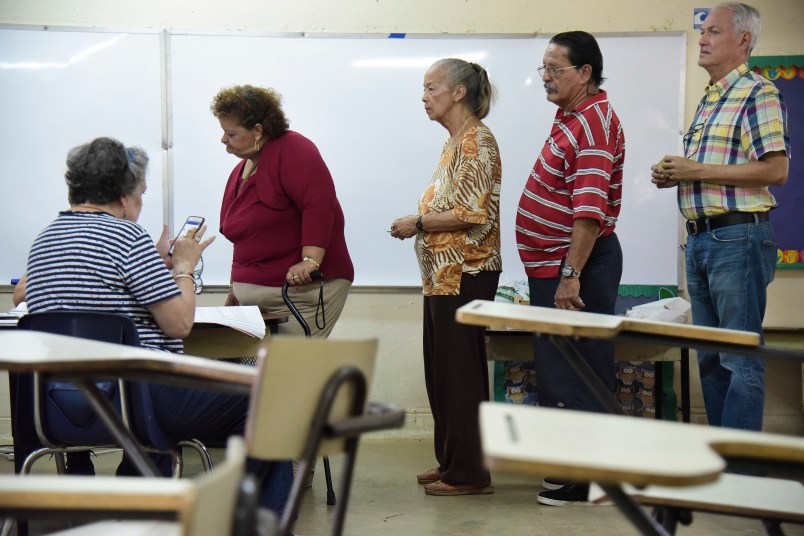I’m very leery of SLATE’s decision to publish projections beginning at 8 AM tomorrow of who is going to win the presidential election in so-called battleground states. They are teaming up with VoteCastr, one of these Silicon Valley startups, who claims to have devised extensive data networks to forecast results. Leave aside the question of whether the predictions by this latest band of hotshots will be accurate. Is SLATE setting a dangerous precedent by teaming up with them?
There is a long-standing controversy about whether early projection of elections results can influence the results themselves – not necessarily by influencing who voters will support, but whether they will vote at all. In the 1980 presidential election, NBC declared Ronald Reagan the winner at 8 PM before polls had closed in the West. There was some evidence that the rate of voting then slowed in western states, including California.
Critics of the networks’ behavior pointed, for instance, to a Southern California congressional race between 20-year Democratic incumbent James Corman, a champion of national health insurance and progressive tax reform, and local anti-busing activist Bobbi Fiedler. Corman was widely favored to win, but Fiedler outpolled him by 752 votes out of 150,000 cast. In the district, turnout was down 3.3 percent from 1976 even though the district’s population had grown by 5.4 percent.
After the 1980 election, there were calls for the networks keeping silent until the polls closed in states and for uniform closing times at the polls (at least on the mainland). As a bare compromise, the networks agreed not to call elections in particular states until their polls had closed; and that’s been the practice ever since. But the fierce competition for clicks on the web has poked holes in this arrangement. In 2004, web sites started publishing early exit polls But this kind of news doesn’t get around that far, and the early exits lack credibility as final projections. (In 2004, the early exits showed John Kerry the likely winner.) SLATE’s decision may not influence the 2016 results, but it moves dial closer to when these kind of projections could have the same effect as they may have had in 1980.








